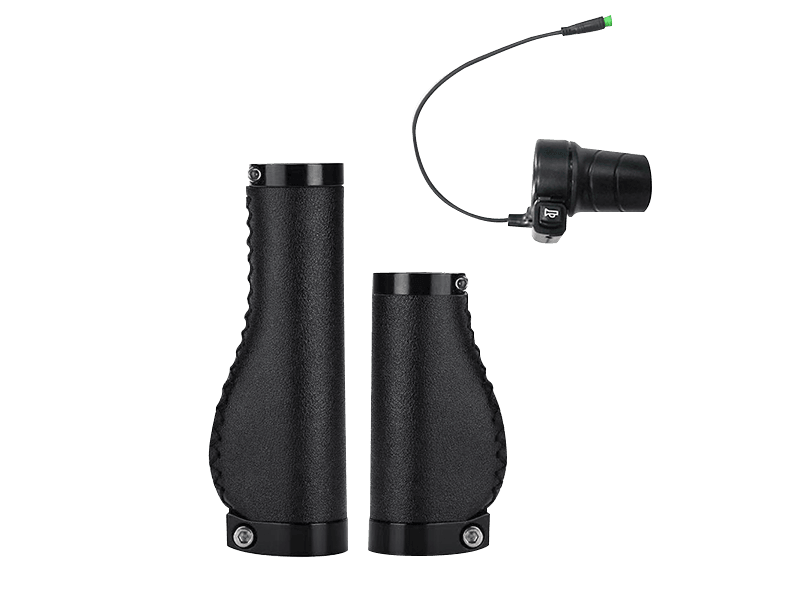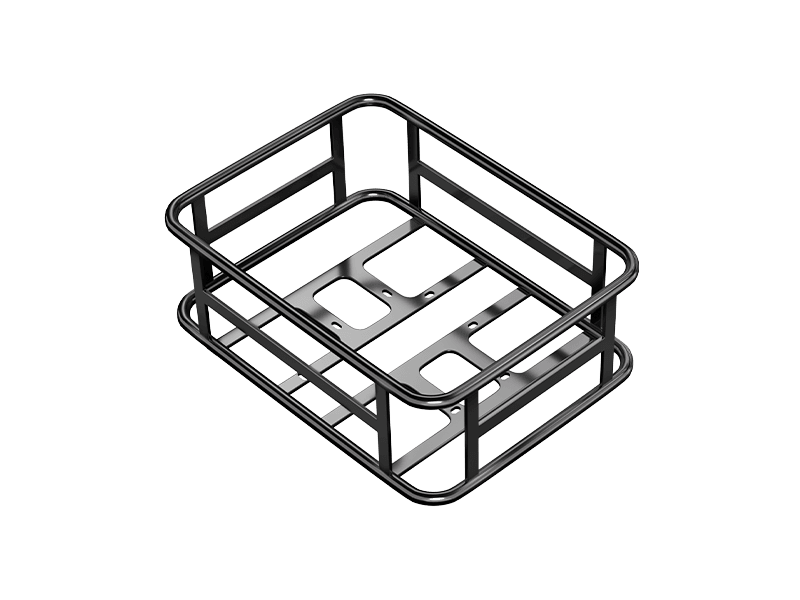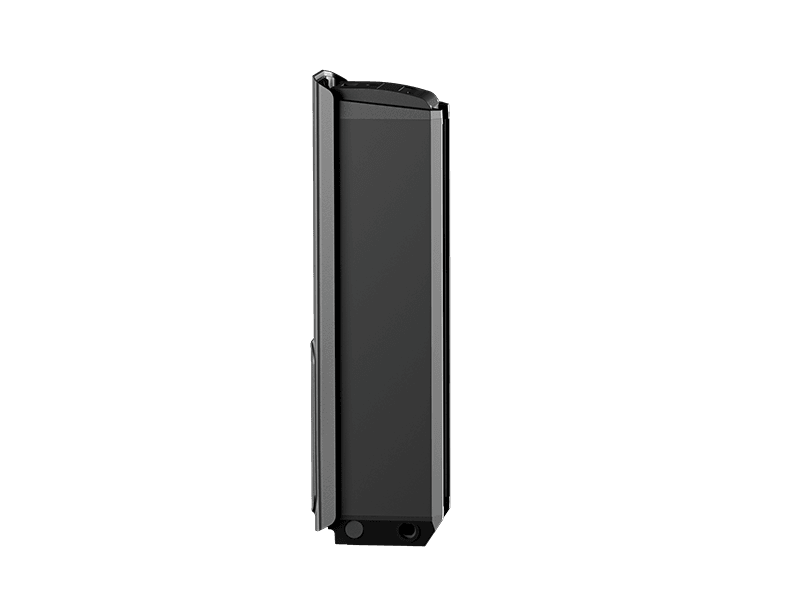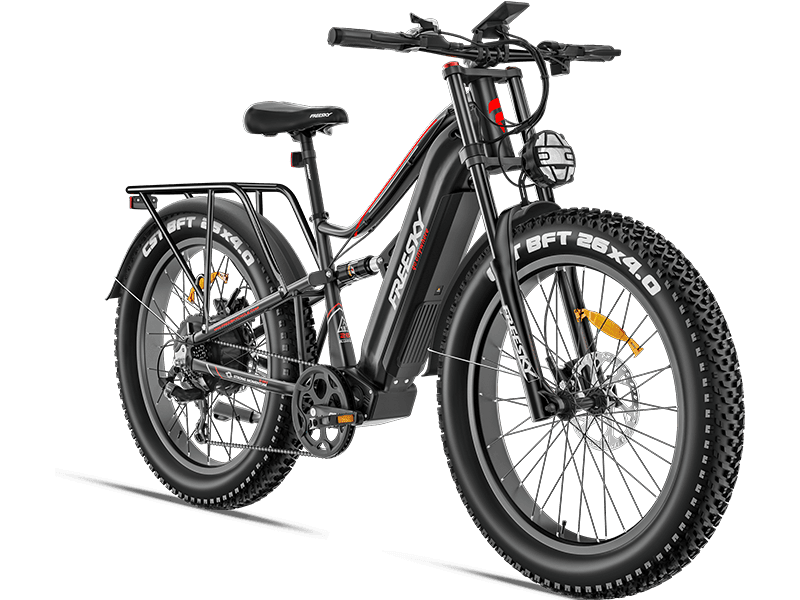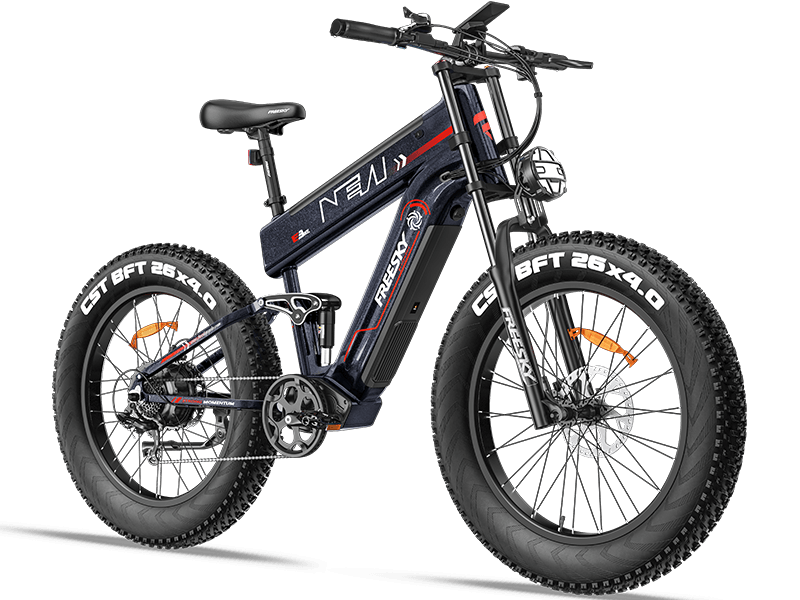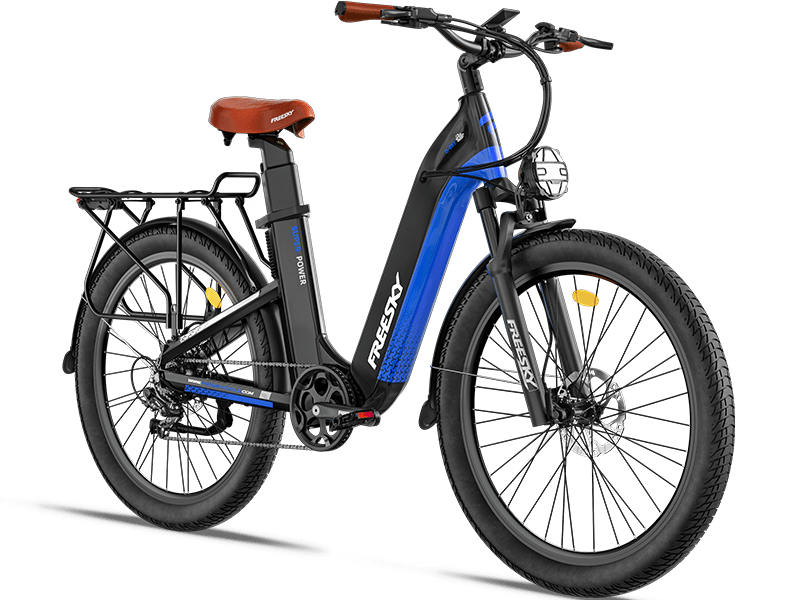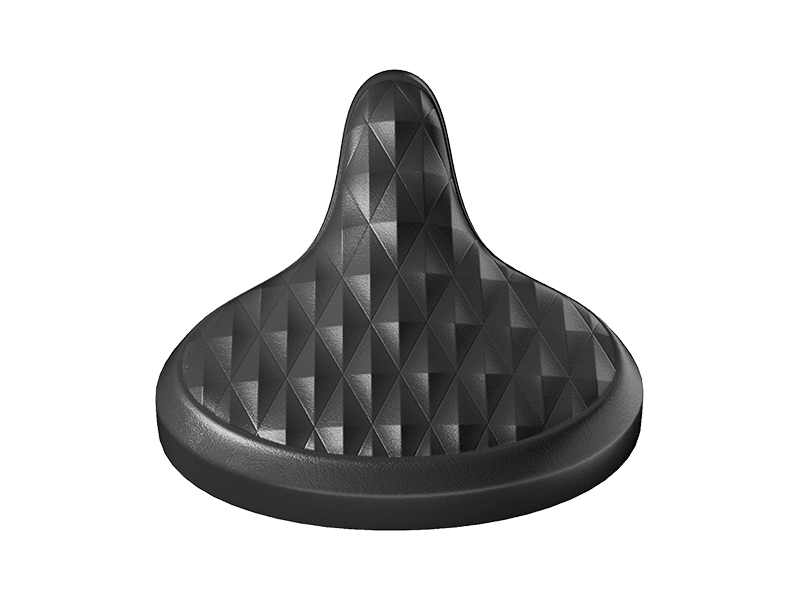What’s the Difference Between a 750W and a 1000W E-Bike Motor?
Jan 08, 2026
Choosing an e-bike often comes down to one key question: 750W or 1000W?At first glance, the numbers may seem close, but the difference in motor power can significantly affect how an e-bike feels on the road—or on the trail 🚲.
Motor wattage influences acceleration, climbing ability, top speed, and even long-term riding comfort. Whether you’re commuting through city streets or tackling steep off-road terrain, understanding these differences will help you choose the right setup for your riding style.
What Does Motor Wattage Actually Mean?
Motor wattage (measured in watts, W) indicates how much power an e-bike motor can deliver. In simple terms, it reflects how much assistance the motor can provide per second.
Higher wattage generally means:
- Stronger acceleration
- Better hill-climbing ability
- Higher potential top speed
The reason the market commonly offers 750W and 1000W options comes down to three factors:
- Different riding scenarios and user needs
- Regional regulations and legal limits
- Balancing performance with energy efficiency
Unlike traditional bicycles that rely solely on pedaling, an e-bike’s wattage plays a major role in defining the overall riding experience.
Performance Comparison: Power vs Efficiency
Top Speed & Acceleration
- 750W e-bikes typically reach 20–28 mph (32–45 km/h)
- 1000W e-bikes can reach 28–35 mph (45–56 km/h) when unrestricted
Acceleration also differs noticeably:
- 1000W models often reach 20 mph in 8–10 seconds
- 750W models usually take 12–15 seconds to reach the same speed
This difference becomes especially clear when starting from a stop or riding uphill.
Power Output & Torque
750W Motor
- Peak output: ~750W
- Cruising power at 15 mph: 400–500W
- Maximum torque: ~65 Nm
1000W Motor
- Peak output: ~1000W
- Cruising power at 15 mph: 600–700W
- Maximum torque: up to ~85 Nm
Higher torque means stronger pulling power, which matters on steep climbs, loose surfaces, or when carrying extra weight.
Environmental Factors That Affect Motor Performance
Both motor types are influenced by external conditions:
- Temperature: Best performance between 60–80°F (15–27°C)
- Elevation: Power drops about 3% per 1,000 ft of altitude
- Wind: A 15 mph headwind can reduce top speed by 20–25%
- Road conditions: Wet or loose terrain may reduce efficiency by 10–15%
While both systems remain reliable, a 1000W motor provides more margin under demanding conditions, at the cost of higher energy use.
Battery Life: It’s About Capacity, Not Just Wattage
Battery Size Matters More Than Motor Rating
A common misconception is that higher wattage automatically means shorter range. In reality, battery capacity (Wh) is the key factor.
Typical examples:
- 750W e-bike: 48V 15Ah battery ≈ 720Wh
- 1000W e-bike: 48V 20Ah battery ≈ 960Wh
Manufacturers usually pair higher-power motors with larger batteries to compensate for energy demand.
Real-World Range Expectations
In everyday city riding:
- Both 750W and 1000W e-bikes can achieve similar ranges when batteries are sized appropriately
- Frequent full-throttle riding reduces range on both
- Hills, wind, and rider weight affect range regardless of motor size
Key takeaway: Don’t judge range by motor wattage alone—always check battery capacity.
Cost and Weight Differences
Higher Power, Higher Cost
1000W e-bikes are generally more expensive due to:
- More powerful motors
- Larger, costlier batteries
- Reinforced frames
- Stronger brakes and upgraded components
Maintenance costs can also be higher, especially when replacing larger batteries over time.
Added Weight
- 750W e-bikes: ~45–55 lbs
- 1000W e-bikes: ~55–65 lbs
The extra weight mainly comes from the motor, battery, and reinforced structure. This can make a difference when lifting the bike, carrying it upstairs, or maneuvering at low speeds without motor assistance.
Which One Is Right for You?
750W E-Bikes: Ideal for Daily Riding
Best suited for:
- City commuting
- Bike lanes and urban traffic
- Riders prioritizing efficiency and lighter handling
They offer a balanced mix of power, range, and compliance with local regulations 👍.
1000W E-Bikes: Built for Demanding Conditions
Best suited for:
- Steep hills and mountain roads
- Off-road trails and rough terrain
- Heavier riders or frequent cargo loads
You get stronger performance and faster acceleration, with the trade-off of higher cost, weight, and energy use.
Final Thoughts: Choose Power Based on How You Ride
The right motor isn’t about choosing the biggest number—it’s about matching power to real-world use.
- Choose 750W if you value efficiency, lighter weight, and daily practicality
- Choose 1000W if you regularly face steep climbs, heavy loads, or challenging terrain
Consider your riding environment, local regulations, and budget before deciding. The right choice will make every ride smoother, safer, and more enjoyable 🚴.
Read More
Motor Core Maintenance
Jan 05, 2026
1. Why Nylon Gears Are Used for the Clutch Instead of Metal
a. Vibration and Noise Reduction
Motor vibration and noise largely come from the rigid impact during gear meshing. Metal gears are hard and low in elasticity, so they cannot absorb impact effectively, often producing high-frequency vibrations and noise.
Nylon gears, on the other hand:
- Have high toughness and elastic deformation capability, reducing vibration transmission.
- Feature a lower surface friction coefficient, further decreasing operating noise.
b. Lightweight Design
Nylon gears are lighter than metal gears, which provides several benefits:
- Reduces motor starting current by ~15%.
- Lowers energy consumption during continuous operation by 8–10%.
- Decreases radial load on motor bearings, extending bearing service life and improving overall motor efficiency.
c. Corrosion Resistance and Chemical Stability
Motor cores may encounter moisture, oil, or mildly acidic/alkaline environments. Metal gears can corrode, leading to transmission failure.
Nylon gears offer:
- Excellent chemical stability.
- Resistance to water, oils, salt spray, and most organic solvents.
- No rust formation unless exposed to strong oxidizers or high-temperature strong acids/alkalis.
d. Electrical Insulation
Motor cores contain energized components like coils and brushes. Metal gears touching these parts can cause electrical leakage, posing a safety risk.
Nylon is an electrical insulator, preventing current conduction and reducing leakage risk at the design level.
2. When to Disassemble the Motor Core for Maintenance
- Increased Noise: If the motor becomes louder than usual, inspect the core for insufficient lubrication grease.
- Routine Inspection: Replenish grease every 600–800 miles of riding.
- Rainy Season Maintenance: After long-term riding in wet conditions, inspect metal components for rust. Lightly polish affected areas with sandpaper and reapply lubrication grease if needed.
3. Lubrication Grease Selection Criteria
- Operating Temperature Range: –20°C to 45°C
- Below –20°C: Grease thickens: solidifies around –45°C.
- Above 45°C: Grease thins: fully liquefies around 80°C.
Selection Guidelines: Choose grease that is:
- High-temperature resistant
- Low-temperature resistant
- Waterproof
Read More
Cycling with Arthritic Knees: How E-Bikes Can Help
Jan 02, 2026
Arthritis can make everyday activities, including walking, painful. It affects many people—one in four Americans experiences chronic knee pain. The good news? The right kind of exercise can protect your joints and relieve pain, rather than making it worse.
Low-impact exercises are particularly important for arthritic knees, and cycling is one of the best options. It improves cardiovascular health, strengthens muscles, increases mobility, and provides a good workout without the heavy impact of running or high-intensity training.
Electric bikes (e-bikes) offer added comfort. Their motor assistance lets you adjust how much effort is needed for each pedal stroke, reducing strain on your knees and making rides more enjoyable and longer-lasting.
This guide explores why cycling—especially with an e-bike—is excellent for those with knee arthritis and highlights key features to look for in a bike that promotes comfort and minimizes knee strain.
Why Cycling Is Beneficial for Arthritic Knees
- Low-Impact Activity: Cycling puts minimal stress on your knees. Unlike running, it allows the knee to move smoothly through a controlled range of motion, improving flexibility and reducing stiffness.
- Strengthens Muscles: Pedaling works the quadriceps, hamstrings, and calves, supporting the joint and easing discomfort.
- Improves Mobility & Stability: Stronger muscles around the kneecap help carry body weight efficiently, reducing pressure on arthritic joints.
- Supports Weight Management: Excess weight adds stress to knees—cycling can help maintain a healthy weight, easing joint burden. (Every 10 pounds of body weight adds 15–50 pounds of pressure on the knees.)
Cycling as a Cardiovascular Exercise
- Heart Health: Cycling improves circulation, lung capacity, and overall cardiovascular fitness.
- Low-Impact Cardio: Provides efficient cardiovascular exercise without stressing the knees.
- Weight Control: Helps manage weight, reducing arthritis symptoms and improving mobility.
Versatility for All Fitness Levels
Cycling adapts to different fitness levels:
- Recumbent Bikes: Reduce knee pressure for beginners.
- Upright Bikes: Suitable for more experienced riders.
- Stationary Bikes: Indoor option for bad weather.
- Outdoor Cycling: Offers mental health benefits—stress reduction, improved mood, and a sense of achievement.
- Electric Bikes: Adjustable pedal assistance allows a customized workout—more help for hills, relaxed rides on flat terrain.
Key Features to Look for in a Bike for Arthritic Knees
1. Adjustable SeatFine-tune saddle height and position for a comfortable, supportive posture, reducing knee strain.
2. Low-Frame HeightModels like Ranger M-540, Wild Cat Ultra A-340, Rocky Pro A-320 have low-step frames, making mounting and dismounting easier and safer.
3. Smooth Gearing SystemLow gears and adjustable resistance let you pedal comfortably without excessive force, protecting your knees.
4. Electric Assist System5-level motor assistance helps take the load off your knees. Adjust intensity to match terrain and comfort level.
Tips for Biking with Arthritic Knees
- Invest in Cycling Gear: Helmet, gloves, eye protection, bright clothing, and comfortable form-fitting clothes.
- Warm-Up First: Light stretches and joint mobility exercises prepare your knees.
- Start Small: Begin with 5–10 minute rides at low resistance; gradually increase duration and intensity.
- Stretch Daily: Pre- and post-ride stretches improve flexibility and mobility.
- Stop if You Feel Pain: Adjust seat or riding position; consult a professional if discomfort persists.
Summary
Freesky electric bikes are designed for riders with knee arthritis. Features like adjustable seats, low-step frames, smooth gearing, and electric assist provide a comfortable, customizable riding experience. Whether you're a beginner or seeking low-impact exercise, Freesky e-bikes let you ride longer and more comfortably while protecting your knees.
Read More


